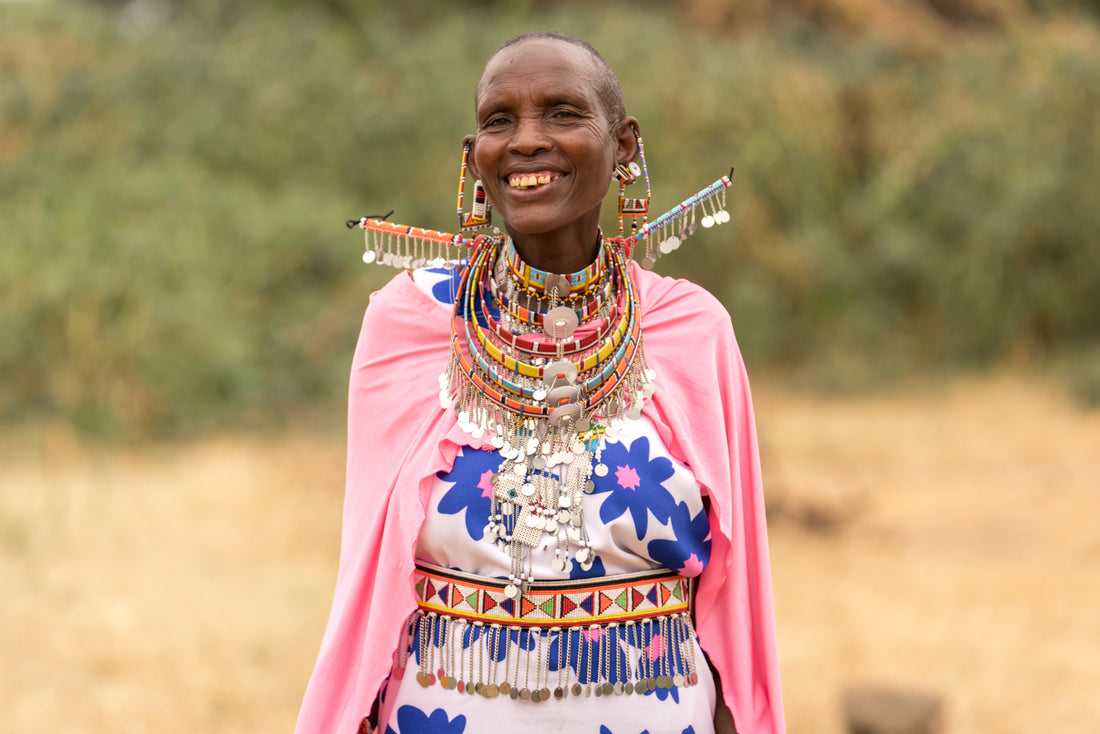
Share this Article

Maasai Beadwork: Tradition and Beauty

Gladys Macharia
Ubuntu Life Head of Product Development
At Ubuntu, all of our products carry a trademark of traditional, beautiful Maasai beadwork. This is a design component at our core given our long relationship working with our Maasai community here in Kenya.

You may have noticed that each of our products, from the Afridrille to our shoppers and totes, bares a unique beaded tab with orange and blue beads individually sewn on. These colors are true to our brand and carry significance in traditional symbology. Orange symbolizes hospitality - the local association with cattle is that Maasai visitors are often served cows milk from orange gourds. To us, the color orange is symbolic of the hospitality Ubuntu Life provides the women and children we empower through our work.
Blue traditionally represents energy and the sky - rain falls from the blue sky which provides water for the cattle. Our ‘Ubuntu Blue’ is also symbolic to Ubuntu Life as we provide communities with borehole water in the remote areas where we work with hundreds of Maasai women in the outskirts of Nairobi near the Ngong Hills.


Cultural Significance of Maasai Beaded Jewelry
The Maasai beaded jewelry has important and specific cultural significance - the beadwork an individual wears will signify their age and social status. Generally individuals of high social standing will wear more colorful and intricate jewelry.
Beads also serve as an important source of income for the Maasai, as Maasai beadwork has been in existence for hundreds of years. It became significant and known to the rest of the world in the 19th century after trade with other tribes. The tribe used natural resources around them to create their jewelry - everything from clay, wood and bone to copper and brass. In the late 19th century trade with the Europeans made glass beads available across the trade routes in Africa. The Maasai started using these glass beads to make their necklaces, bracelets, and other jewelry. Today glass is still the main material used by the tribe for their beads.
The colors used in the beadwork are selected for their beauty. The colors are also symbolic and have important meanings understood by the tribe.
Often these meanings have an association with cattle, which is the Maasai's main food source and for which they have a deep connection.

Color Representation

Red - stands for bravery, unity, and blood. Red is the color of cows blood. Often a cow is slaughtered when the Maasai meet and therefore unity is associated with red.

Green - symbolizes health and land. Cattle graze on the green grass of the land.

Blue - represents energy and the sky. Rain falls from the blue sky which provides water for the cattle.

Orange - Symbolizes hospitality. The association with cattle is that visitors are served cows milk from orange gourds.
White - represents peace, purity, and health. The association with health comes from white cows milk which the tribe drinks to stay healthy.
Yellow - like orange yellow also symbolizes hospitality. The animal skins on visitors beds are yellow.
Black - represents the people and the struggles they must endure.












